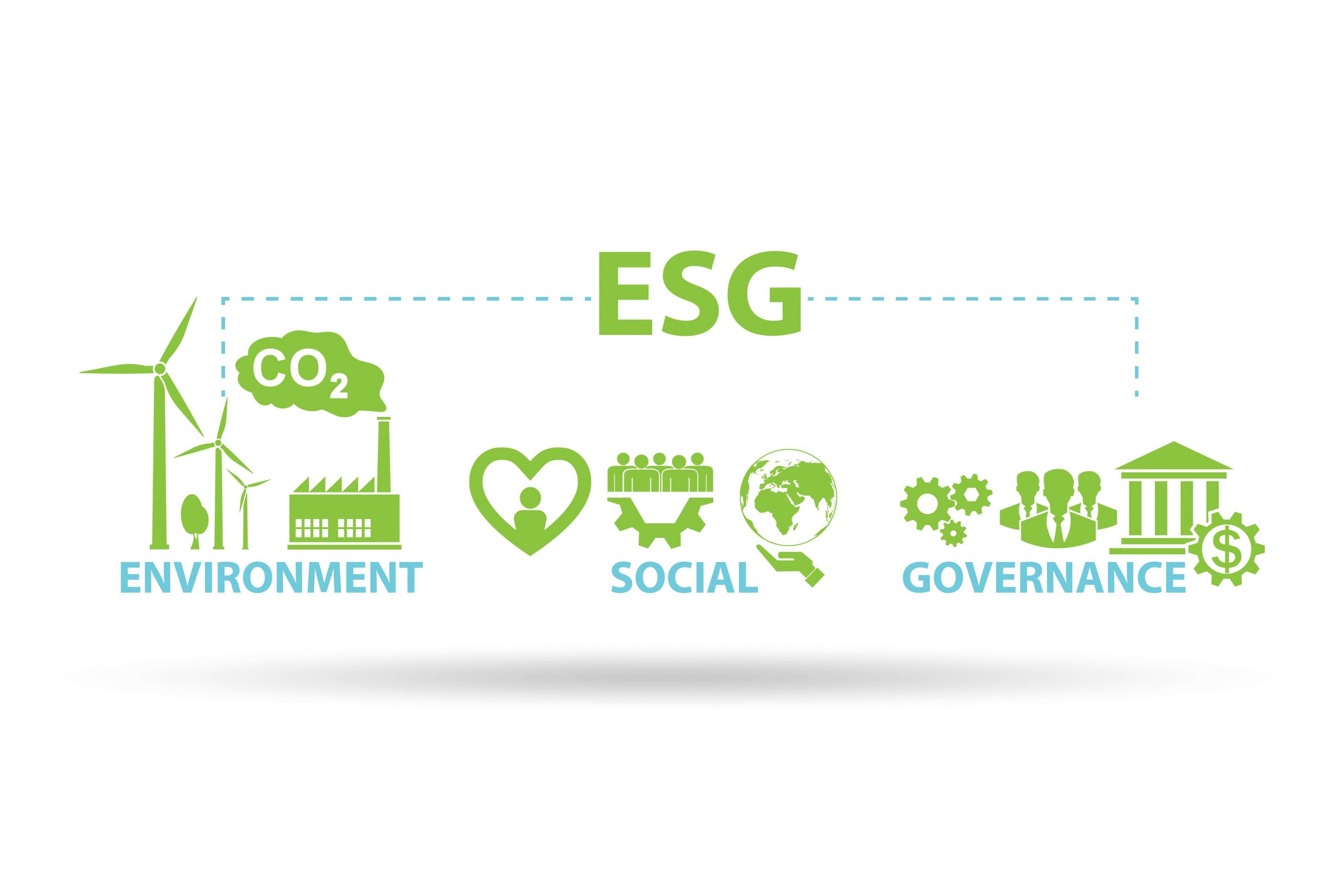This site uses cookies to provide you with a great user experience. By using BondbloX, you accept our use of cookies.
Bond Market News
ESG Bonds – How Different (or Not) Do They Trade vs. Non-ESG Bonds?

By Raahil Shah & Amruth Sundarkumar
The concept of Environmental, Social and Governance (ESG) bonds is not new to the markets – the first such bond was issued by European Investment Bank over a decade ago in 2007. However, the awareness towards these bonds, particularly social bonds, has grown many folds in 2020.
The most noteworthy issuance thus far has been the European Union’s issuance of SURE bonds, social bonds with proceeds earmarked for mitigating unemployment in its member nations due to the Covid-19 pandemic. The first tranche of €17bn, priced in late October, smashed the record for the largest orderbook at over €233bn (~$275bn).
One question with respect to ESG bonds on investors’ minds has been Whether ESG bonds trade at a premium to non-ESG bonds? And if yes, to what extent?
In this report, we attempt to answer these and more questions related to ESG bonds.
- Abstract
- Definitions
- History of ESG Bonds
- How truly ESG are these bonds in reality?
- A study on whether ESG bonds trade at a premium to their non-ESG counterparts
- Conclusion
Abstract
There has been a debate on whether ESG bonds trade at a premium – tighter (lower) in terms of credit spreads – to conventional non-ESG bonds. To answer this question, we conducted a study of 40 bond pairs – each pair consisting of an ESG bond and a non-ESG bond issued in 2020 by the same issuer and having a similar duration. We compared the Z-spread, a measure of credit spread, between the two bonds in each pair. We found that 58% of the ESG bonds trade at a premium to their non-ESG counterparts, with the balance 42% either having zero premium or a discount. Broadly, not only are the results mixed, but overall, premiums are not large and therefore it would not be representative enough to conclude that ESG trade tighter to comparable non-ESG bonds.
Definitions
International Capital markets Association (ICMA), a self-regulatory body predominantly for impact-related bonds has given detailed guidelines and principles for defining green, social, sustainable and sustainability-linked bonds. The classifications are based on the directive of the issuer’s primary objectives of the projects.
Green Bonds1: Bonds issued to specifically fund projects (new/existing) that have a positive environmental impact. Green bond principles (GBP) set out a standard covering four elements:
- Use of proceeds (range of 10 categories but not limited to them) including renewable energy, clean transportation, sustainable water, and wastewater management
- Process of evaluation and selection of green projects
- Management of proceeds (tracking and specifying amounts used/unused to investors)
- Reporting (at least annual reporting on details on specific projects etc.)
Social Bonds2: Bonds issued to specifically fund projects (new/existing) that have a positive social impact. Social bond principles (SBP) set out a standard covering four elements:
- Use of proceeds (range of 6 categories but not limited to them) including affordable basic infrastructure, affordable housing and employment generation
- Process of evaluation and selection of social projects
- Management of proceeds
- Reporting
Sustainability Bonds3: Bonds issued where proceeds are exclusively applied for a combination of both green and social projects. These are bonds that are aligned with the four elements of the green and social bond principles.
Sustainability-Linked Bonds4: Bonds whose financial/structural characteristics can change depending on whether the issuer achieves certain predefined ESG objectives with a timeline. These bonds, not to be confused with sustainable bonds, get their name from the commitment that issuers make on ESG objectives and not based on use of proceeds. Hence, issuers can use proceeds from these bonds for general purposes. Sustainability-linked bond principles set out a standard covering four elements:
- Selection of Key Performance Indicators (KPIs)
- Calibration of Sustainability Performance Targets (SPTs)
- Bond characteristics
- Reporting and Verification
Recently, ICMA refined its sustainable funding definition to include Covid-19 related expenditure and efficiency in provisioning health services and equipment and medical research.
Blue Bonds5: Whilst relatively new, these bonds are issued with proceeds going to marine-related projects that can include marine-related sewage treatment projects, ocean conservation and their like. Seychelles issued the world’s first sovereign blue bond in 2018 with proceeds going towards the expansion of marine protected areas, improved governance of priority fisheries and the development of the Seychelles’ blue economy.
History of ESG Bonds
The first ESG bond was issued by European Investment Bank6 (EIB) in 2007 when it raised €600mn though a green bond under the label Climate Awareness Bond. The proceeds from the issuance were used towards renewable energy and efficient energy projects.
This was followed by the World Bank’s first ever green bond issuance in 2008. The bond was specifically structured for a group of Swedish pension funds that wanted to invest in projects that help the climate. This SEK 2.3bn ($266mn) green bond created the blueprint for today’s green bond market with defined criteria for projects eligible for green bond support, an opinion from Centre for International Climate and Environment Research (CICERO) and impact reporting. This formed the basis for the Green Bond Principles by ICMA.
ESG bond issuance volume, which predominantly consisted of green bonds till 2013, grew from ~$800mn in 2007 to ~14bn in 2013. Thereafter, with the introduction of social, sustainable, and sustainability-linked bonds, total ESG issuance skyrocketed to $421bn in 2019, a staggering 30x growth in six years.

2019 was a record year for the ESG bond market with total issuance of $421bn, 93% higher compared to 2018’s issuance of $220bn. Cumulative ESG bond issuance as of 2019-end breached the $1tn mark, led by green bonds at $691bn followed by sustainability-linked bonds at $190bn, sustainable bonds at $76bn and social bonds at $45bn.
2020 YTD issuance stood at $370bn as of October, with the pandemic causing a 22% and 37% decline in green and sustainability-linked bonds respectively. The negative impact of the pandemic on economic activity led to a surge in social bond issuance – $72bn, almost 4x of 2019’s issuance of $18bn.
The European Union was one of the notable issuers with its €17bn issuance of SURE bonds, social bonds with proceeds earmarked for mitigating unemployment in its member nations. These bonds, priced in late October, smashed the record for the largest orderbook at over €233bn (~$275bn). Among the corporates, Google parent Alphabet raised $5.75bn via sustainability bonds, the largest ESG issuance by a corporate in history8. The company stated that use of proceeds is consistent with the GBP and SBP across eight areas that include energy efficiency, clean transportation, affordable housing and Covid-19 response.
With growing issuance, there has been an increased focus on use of proceeds – whether it truly meets ESG criteria or not.
Are proceeds from ESG bonds truly used towards ESG projects?
Several issuers have been accused of ‘greenwashing’ – the practice of issuing ESG bonds primarily as a marketing gimmick to promote themselves as being ESG-friendly, when in reality, their claims are vastly overstated.
The term greenwashing9 was coined by environmentalist Jay Westerveld in 1986 and originates from his visit to the Beachcomber Resort in Fiji in 1983. He noticed that the resort had placed a note beside the towel stand that encouraged patrons to reuse towels to reduce ecological damage. However, looking at the ongoing construction of new bungalows and vast amounts of wastage at the resort, it was clear to Westerveld that the resort did not care much for the environment and were simply looking to reduce its expenses associated to towel cleaning.
While there are organizations like CICERO and Sustainalytics that certify ESG bonds, the lack of globally accepted standards has left some grey areas in this space. Bond investors can read through a bond’s prospectus to figure out how truly ESG that particular bond is in reality. We have put together some examples of ESG bonds issued this year with a snippet of their use of proceeds from the prospectuses.
Below is a snippet of an Asian state-owned power company’s bond prospectus, where no assurance is given on whether the use of proceeds for projects selected will meet investor expectations on environmental performance. As part of reviewing the framework, they have engaged with Sustainalytics to provide an opinion.

With the onset of Covid-19, a sovereign issued a bond wherein the proceeds of the issue would go into funding the country as well as Covid-19 relief programs.

Novartis in September this year issued an 8Y zero-coupon €1.85bn sustainability-linked bond (SLB) that carries a 25bp coupon step-up if the pharmaceutical company fails to hit key targets incorporated in the deal structure. The key targets are that Novartis increases “innovative therapies patient reach by 200%” and its “flagship programmes reach by 50%” before 2025.

Bank of China (BOC) issued a blue bond in September 2020, a first in Asia along the lines of the Green Bond Principles with EY Hua Ming providing impact evaluation through the life of the bond. The issuance comprised a 3Y $500mn bond and a 2Y CNH3bn ($442bn) bond. As GreenArc Capital reports, majority of these projects are based in China, with token projects in the UK and France. The expected environmental benefits from these projects are an increase in treatment capacity of over 6 million m3 /day of sewage that flows into the oceans, and an increase in installed capacity of approximately 3,000 MW from the wind power projects.
Bank of America (BofA) also issued a sustainability bond for social purposes to advance several of the UN’s sustainable development goals. The document notes that BofA will annually publish on a designated website, regarding the allocation to eligible green and social assets.

Most recently, Germany received a rather tepid response for its 5Y €4.6bn ($5.4bn) green bond with orders at just 1.29x issue size. This is the second green bond issuance by the sovereign. Its debut green bond priced in early September got orders of over 5x issue size for its €6.5bn ($7.7bn) 10Y green bond. Critics suggest that the lukewarm response to the second bond was due to misleading use of proceeds. Sven-Christian Kindler10, lawmaker of the Green party in Germany’s lower house said, “Instead of labelling expenditure retrospectively, fresh money should be collected in the financial market for climate protection. Simply labelling bonds green without spending even one euro more on climate protection is greenwashing.”
Do ESG bonds trade at a premium to non-ESG bonds?
The premium referred to here is the credit spread, specifically Z-spread differential between comparable ESG and non-ESG bonds of the same issuer being less than 0. For green bonds, this premium is called “greenium”. The premium is calculated as follows:
(Z-spread of the ESG Bond – Z-spread of the non-ESG bond) < 0 implies a premium for ESG bonds, over comparable non-ESG bonds. A premium would indicate that the bond market prices an ESG bond tighter (lower yield) vs. a non-ESG bond, all else remaining constant.
We consider Z-spreads for this analysis to check for premium rather than nominal yield differentials for the following reasons:
- Z-spreads are a better representation of risk and comparison since they take into account the term structure of interest rates/shape of the yield curve – as it is derived from the treasury spot curve. A G-spread (nominal yield of the corporate bond minus Treasury yield of the same maturity) or just a nominal yield considers only one point on the Treasury curve for comparison.
- At a single point in time, Z-spread is a good measure since it assumes ‘zero-volatility’ (hence the term ‘Z’) in the path of future interest rates which makes for an equal comparison.
To answer the question on whether a premium exists, we conducted a quick study of 40 pairs of ESG and non-ESG bonds. Both bonds in each pair are from the same issuer with the same seniority and have a duration within 1 year11 of each other. For example, if a company has an ESG bond with a duration of 5.5 years, then the same issuer’s non-ESG bond will have a duration between 4.5 and 6.5 years.
Methodology
The criteria considered for the study is as follows:
- A total of 40 bond pairs were selected (Appendix A) across Green, Social, Sustainable and Sustainability-linked categories. They have been selected across regions and sectors.
- All 40 bonds have been issued in 2020
- The bonds considered are denominated either in USD or EUR
- The bonds issued have an amount outstanding of over $300mn



Limitations
While we did consider non-ESG bonds with a duration within 1 year from the ESG bond, there were no perfect matches. This is in line with similar studies11 that have considered comparable bonds that mature 1 year from the ESG bond. While many ESG bonds exist in the market, the lack of sufficient comparables limits the ability to select more bonds.
Findings
23 ESG bonds traded at a premium (lower Z-spread) vs. their non-ESG counterparts. The histogram below shows the quantum of the premium (positive or negative) for all the 40 bond pairs.

Majority of the premium of ESG bonds over non-ESG comparables were observed from APAC issuers with a median premium of 3.9bp. This was followed by the EU and Americas at 2.1bp, 1.9bp while Supranationals had a negative premium of 0.05bp.

We then plotted the z-spread differentials as a percentage of the average z-spread of the ESG and non-ESG bond – by region.

We then plotted a scatterplot to compare Z-spreads of ESG bonds (X axis) vs. non-ESG bonds (Y axis) with each dot indicating a bond pair. The grey line is the line of indifference which implies that the Z-spreads for ESG and non-ESG bonds are the same. All bonds above the line (orange dots) imply that ESG Z-spreads are lower than non-ESG Z-spreads for those bond pairs while dots below the line (blue dots) imply the opposite.

From the above, it appears that there is a slight premium for the above selection of ESG bonds of issuers over their non-ESG comparables.
Conclusion
The study shows optical evidence of some premium being placed on ESG bonds though it may not be representative enough for the larger population. On a larger picture, there appears to be a premium of ~2-3bp for ESG bonds with some ESG bonds depicting a larger premium and others which do not trade at a premium to comparables. Hence, it would be too early to say with conviction whether premiums exist or not. With further issuances across the ESG spectrum over the next few years and a wider set of data points, it would be suitable to perform similar studies over time and check whether premiums exist or not!
Appendix
List of bonds considered in the study.

References
7https://www.gbm.hsbc.com/-/media/gbm/reports/insights/social-bonds.pdf
11Similar studies have been conducted that compare bonds (ESG vs. non-ESG) that mature within one year from each other.
https://www.fidelityinternational.com/editorial/blog/how-to-avoid-the-bond-greenium-045928-en5/
https://www.gsb.stanford.edu/gsb-cmis/gsb-cmis-download-auth/474556?pid=
Go back to Latest bond Market News
Related Posts:
ESG Bonds – Everything You Need to Know
March 15, 2022

High-Yield Bonds Lead The July Recovery
August 6, 2018

Bond Yields – Explained
December 26, 2024







